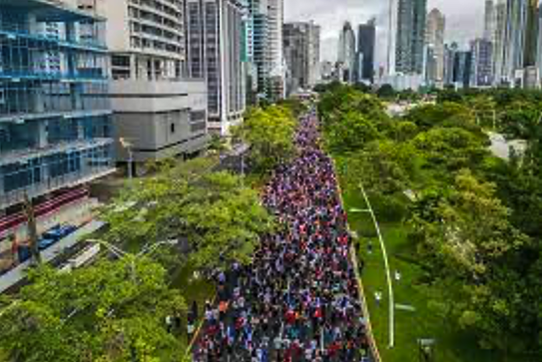Martin Mowforth summarises below a few of the 2025 reports received about Costa Rican development policies.
By Martin Mowforth
August 2025
UN Ocean Conference and oil exploration
The third United Nations Ocean Conference (UNOC3) was held in Nice, France, from 9th June to 13th June this year and was co-hosted by France and Costa Rica. Its aim was to accelerate action and mobilize all actors to conserve and sustainably use the ocean in line with Sustainable Development Goal 14: Conserve and sustainably use the oceans, seas and marine resources for sustainable development.
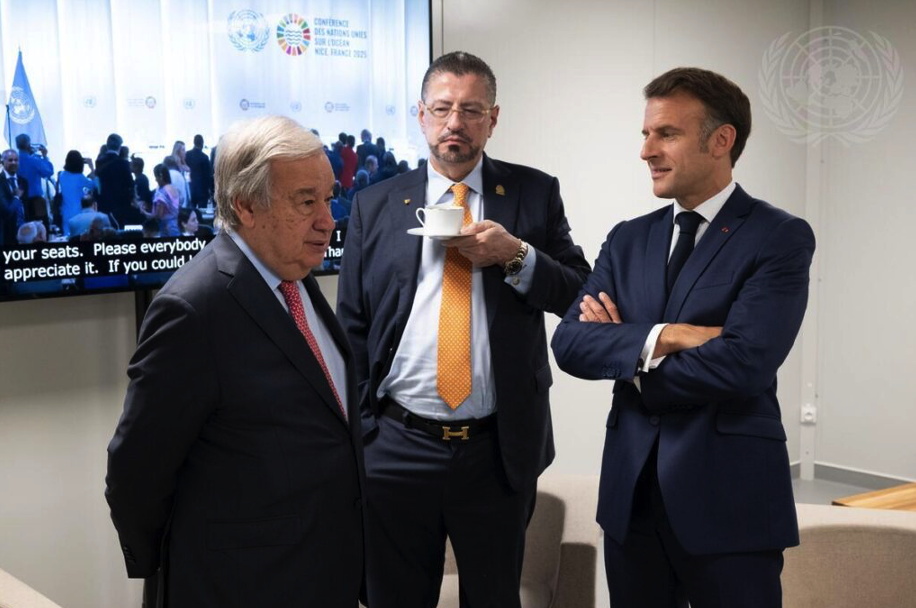
UN Secretary General Antonio Guterres with Costa Rican President Rodrigo Chaves and French President Emmanuel Macron. (Photo: courtesy of the United Nations/Evan Schneider)
It is perhaps more than ironic that a little before the global conference, President Chaves had expressed a keenness to re-start oil exploration in Costa Rican waters. He argues that: “we’re not exploiting reserves but assessing them with non-invasive methods like electromagnetism. Let’s know what’s behind the door before locking it.”
Chaves insists that his approach links development and conservation. On the other hand, Laura Méndez of the Costa Rican Federation for the Conservation of Nature (FECON) says that “Costa Rica cannot afford to flirt with oil.” Other Costa Rican environmental and activist organisations such as Fundación MarViva also oppose the move, aware that exploration leads into exploitation.
Elsewhere Chaves has championed environmental causes such as the High Seas Treaty (adopted by the UN in 2023). His government has developed a significant collaborative effort with the French Development Agency and the international NGO Conservation International in launching the Blue Carbon Initiative whose purpose is to protect coastal ecosystems.
At the same time, however, fishermen in the Gulf of Nicoya are concerned about a growing crisis caused by illegal fishing, over-exploitation of fish stocks and institutional indifference, all of which are reported to be pushing fish stocks to the limit. The Gulf of Nicoya directly supports about 1,400 fishers and their families. There is currently a three-month ban on fishing from May to July in order to let fish stocks recover, but local fishers say that the ban is widely ignored and “there’s no enforcement from the authorities, so the exploitation continues,” said one licensed fisherman. During the ban, the licensed fishers receive a subsidy of about $230 (USD), but delays in payment of the subsidy have increased frustration and anger.
Open-cast mining
In 2010 Costa Rica implemented a ban on open cast metal mining and the ban has held for the last 15 years. Now the government is pushing a bill that could open up the whole of the Cutris district of San Carlos in the north of the country to open-pit gold mining. As introduced by President Chaves, the bill would allow mining concessions through auctions with no cap on the number of permits.
The risks involved in open cast mining include river pollution, landscape destruction, forests destroyed and leakage from the large tailings ponds required for the processing of the metal. The tailings ponds are the biggest headache for environmentalists and neighbouring citizens as these are laced with cyanide and other heavy metals used in the separation of gold from the ore. As has been shown by so many other examples around the region, if any leakage occurs, however small, it will likely affect principally water supplies (rivers and aquifers) but also the surrounding soil and air.
Biologist Jorge Lobo suggests that the bill would threaten the country’s biodiversity, sovereignty and environmental legacy. “It could unleash a flood of mining requests, undoing decades of protections,” he said. In March, Jiri Spendlingwimmer of FECON (The Costa Rican Federation for the Conservation of Nature) allayed some of our fears in suggesting that the bill has little chance of progress in Congress. From June onwards, however, environmentalists have had to hone their arguments against such a potentially devastating proposal.
Watch this space.
Escazú Agreement
The Escazú Agreement is a regional treaty on access to environmental data, public participation in environmental decision-making, and access to justice in environmental matters in Latin America and the Caribbean. It has two other significant provisions: the protection of environmental defenders and a general right to a healthy environment for everyone.
It is significant for four particular reasons:
- It is the first environmental treaty in Latin America and the Caribbean to address access rights and to promote the protection of environmental defenders.
- It is based in a human rights framework.
- It promotes collaboration and capacity building among countries of the region.
- It provides a tool for addressing climate change.
The Agreement came into force in April 2021. It was adopted in Escazú, Costa Rica in March 2018, but shortly before the UN Ocean Conference this year, President Chaves rejected the treaty as redundant, claiming that Costa Rica’s laws already cover its provisions and that it was more like demagoguery rather than action.
Proponents of the Agreement, however, argued that Escazú would strengthen protections for environmental defenders who face increasing threats in the region. It would be a mistake to believe that these threats do not exist in Costa Rica, a country with an international reputation for peace-making due to the 1949 abolition of its armed forces. First, that reputation should by now have disappeared thanks to the militarising influence of the USA during the 1980s and 1990s. And second, in 2020, the Costa Rican Federation for the Conservation of Nature (FECON) published a lengthy report on the criminalisation of the ecologist movement in Costa Rica – see references. And finally, in 2022, the Legislative Assembly blocked the government’s signing of the Escazú Agreement and Chaves’ recent comments are in line with the Assembly’s decision. It will remain, then, as one of the countries which has failed to ratify the treaty.
Foreign ownership of tourism and properties in southern Costa Rica
As all our readers will already know, of all the countries in Central America, Costa Rica is globally renowned for its tourism offerings, and especially for its so-called ecotourism, its nature-based tourism. Despite the incursion of numerous large-scale, transnational resort condominia, its tourism reputation has been built on its provision of small-scale, high quality, personalised tourism experiences.
One of the supposed benefits of this kind of tourism development is that it involves local people in different aspects of the industry and in reaping the benefits of the activity. In such circumstances, it is not intended that ownership of the activity, the industry, its infrastructure and its property should be turned over to wealthy individuals or companies from the globalised North. Various places in the Osa Peninsula of Costa Rica, however, are slipping into foreign ownership.
In the June 12th radio programme ‘Voices and Politics’ of Radio University of Costa Rica, Óscar Leiva Alpizar presented his research into the touristification of Ojochal de Osa. Ojochal is located on the Pacific coast of Costa Rica close to the Paso la Danta Biological Corridor. Historically Ojochal was a rural and agricultural town, but since the 1990s it has been transformed into a high value tourism and luxury residential area through foreign investment, large-scale sale of land and the development of real estate projects.
The old livestock farms have been replaced by exclusive residences overlooking the sea. Many local families have been displaced or have been forced to integrate as labour into the new economic model.
Between 1990 and 2024, over 3,000 real estate transactions were recorded; 68 per cent of these relate to properties over $250,000 (USD) which has increased land values and made access to land and housing difficult for traditional inhabitants.
Alpizar’s research also points to the ambivalence of the State which is often absent in regulation and planning. “Costa Rica now needs specific legislation to manage the tourism boom in a fair and sustainable way, safeguarding both biodiversity and the rights of local communities,” said Alpizar.
It is interesting to note that on 8th July this year, the weekly newspaper ran a headline (‘UNED expert warns: insecurity is already compromising tourism and may affect foreign investment’) that was clear in its assumption that foreign investment is a good thing. Not necessarily always so.
Costa Rica and Pesticides
In 2019 Costa Rica was the most intensive user of pesticides in Latin America (Alvarado, 2019). Moreover, statistics from the United Nations Food and Agriculture Organisation (FAO) placed Costa Rica in the top four countries in the world for pesticide use per area of cropland in 2018 (Mowforth, 2025). Of the ten most widely used pesticides in the country, eight are Highly Hazardous Pesticides (HHPs) according to a technical report by the Research Institute of Toxic Substances of the National University (UNA).
A recent item by the obsequious Tico Times (a weekly English language online newssheet in Costa Rica) suggests that the government is moving to ban HHPs which have already been banned in 70 per cent of OECD member countries. The new law would mandate: a biannual update of the national list of banned pesticides; biannual risk assessments; consideration of proven evidence of harm to health or the environment; and promotion of viable alternatives that are less harmful. Training, technical assistance and extension programmes would also be strengthened.
Currently these toxic pesticides are in widespread use throughout Costa Rica, although their prevalence goes largely unnoticed by the more than two million foreign visitors every year. Whether the proposed bill ever becomes law and whether and how it would become effective even if it does become law is still uncertain. The contrast between the country’s oh-so-clean image and its intensive use of highly toxic pesticides is likely to remain one of Costa Rica’s contradictions.
The above examples are just a few of the contradictions between Costa Rica’s remarkably positive international public image and the reality of its sometimes damaging social and environmental policies.
By chance, half-way through compiling the above summary, I received the following letter from friend and Costa Rica resident Cristoph Burkard which rather emphasises the point made about the significant difference between Costa Rica’s reputation and reality. Many thanks to Cristoph.
Costa Rica commemorates Earth Day amidst an unpunished ecocide.
Cristoph Burkard has been a longtime resident of Longo Maï in southern Costa Rica. On Earth Day this year, he wrote to ENCA (the Environmental Network for Central America) to draw attention to the international image of Costa Rica as a paragon of environmental virtue and the reality of its high levels of pollution and anti-environmental policies affecting the country’s land, water and atmosphere. As he suggests elsewhere, it is important “to correct so many illusions about our wonderful little country”.
22/04/2025
While internationally the country sells a false face, within the territory it promotes a reform to legalise water contaminated with pesticides. Yes, you read it correctly: the government seeks to allow agrochemicals in the water that we drink.
To this, we can add the destruction of mangroves, wetlands, forests and coastal zones by projects which violate environmental laws with total impunity. Illegal deforestation, urban spread and ghost fishing are devastating marine ecosystems.Costa Rica is the fifth highest exporting country of shark fins. Tons of sharks are brutally de-finned each year with the full knowledge and permission of the State. What type of environmental leadership allows that?
And to complete the picture, the government has eliminated the Act that facilitated the Sustainable Development Goals, just one month before jointly organising the 2025 Ocean Summit. What legitimacy is left?
Because without clean water, without wildlife, without healthy oceans, there is no future.
Today, in commemoration of Earth Day, we pay homage to those brave people who, day after day, defend nature and their land.
The Latin American Biblical University
Embassy of the Plurinational State of Bolivia in Costa Rica
FECON (Costa Rican Federation for the Conservation of Nature)
The Green Bloc
CoecoCeiba Friends of the Earth Costa Rica
University of Costa Rica
Through the Socio-Environmental Kiosks Programme, all the above have united to draw attention to environmental defenders, activists, community organisations and Indigenous communities in resistance and to pay homage to environmental defenders on Earth Day, 22 April, 2025.
Sources:
- Jiri Spendlingwimmer (FECON), personal communication, translated by ENCA member Liz Richmond, 9th March 2025, ‘Enabling open pit gold mining in Costa Rica’.
- Martin Mowforth and Ian Munt, 2016 (4th edition), ‘Tourism and Sustainability: Development, Globalisation and New Tourism in the Third World’, London, Routledge.
- Óscar Leiva Alpizar, https://repositorio.una.ac.cr/server/api/core/bitstreams/dfdbab25-5b24-4db0-b1a4-8f4238317daa/content
- Laura Alvarado, (2019) ‘Costa Rica’s Ministry of Environment Puts a Stop to Pineapple Project That Could Affect Wetlands’, The Costa Rica Star, San José, 20 December.
- Mauricio Álvarez Mora, Alicia Casa Mora y Fabiola Pomareda García, (Diciembre 2020), Una memoria que se transforma en lucha: 30 años de criminalización del movimiento ecologista en Costa Rica, FECON, San José, Costa Rica; FECON.
- Tico Times, (2 May 2025) ‘Costa Rica Aims to Ban Highly Hazardous Pesticides’, Tico Times, San José.
- Tico Times, 30 May 2025, ‘Costa Rica, France Launch Blue Carbon Initiative Ahead of UN Oceans Summit’, Tico Times, San José.
- Tico Times, 6 June 2025, ‘Costa Rica Fishermen Sound Alarm on Gulf of Nicoya Overfishing Crisis’, Tico Times, San José.
- Radio University of Costa Rica, 12 June 2025, ‘Voices and Politics’, San José.
- Tico Times, 15 June 2025, ‘Costa Rica’s President Stirs Debate with Oil Exploration Stance’, Tico Times, San José.
- Fabiola Pomareda García, 17 June2025, ‘Agua contaminada con mercurio en Crucitas: Vecina cuestiona afirmación de Ministra de Salud’, Semanario Universidad, San José.
- Tico Times,24 June 2025, ‘Costa Rica’s Cutris Mining Bill Threatens Massive Environmental Damage’, Tico Times, San José.
- Martin Mowforth, (October 2025, forthcoming) ‘Dirty Pineapples from Costa Rica’, in ‘The Pineapple from Domestication to Commodification: Re-Presenting a Global Fruit’, British Academy.
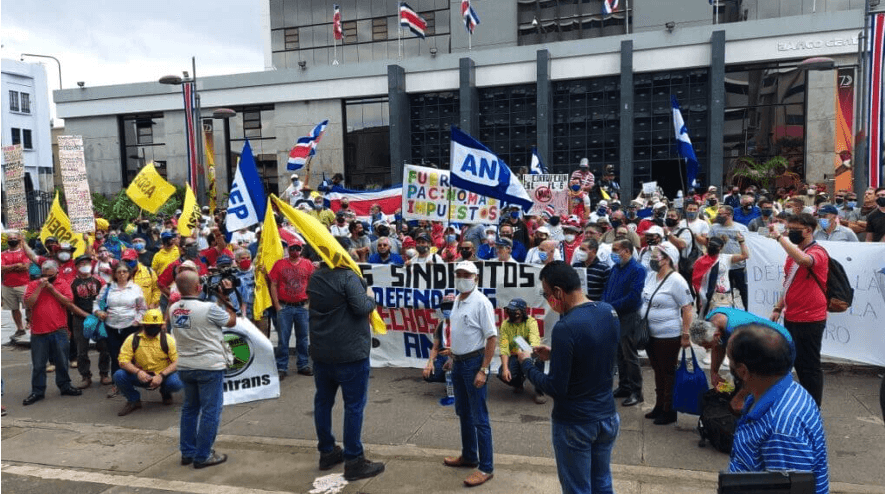
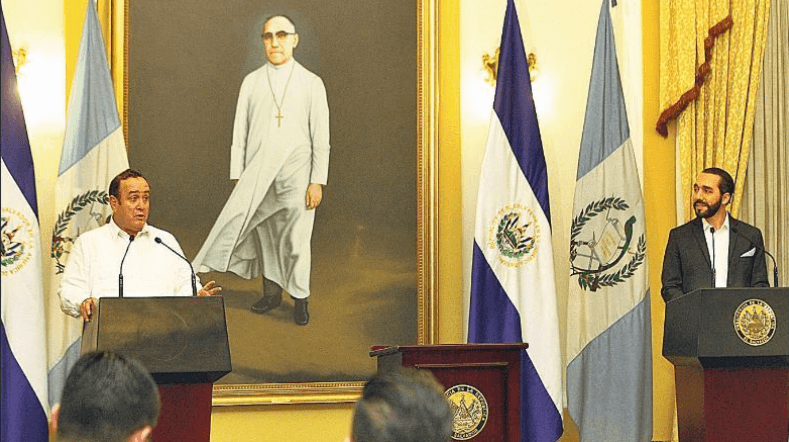
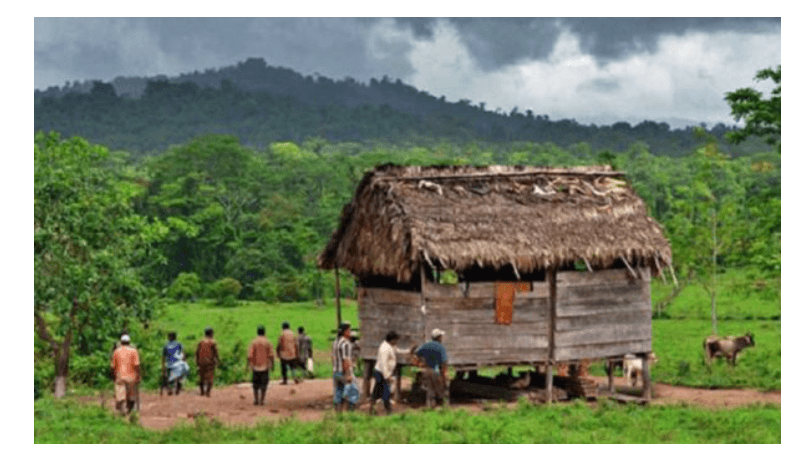
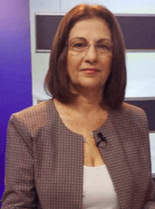
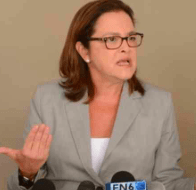
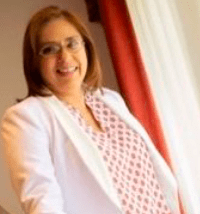
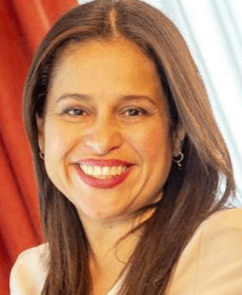
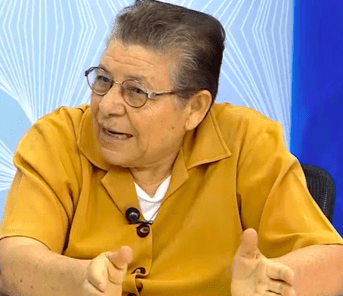
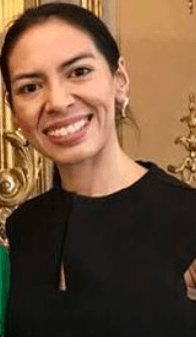
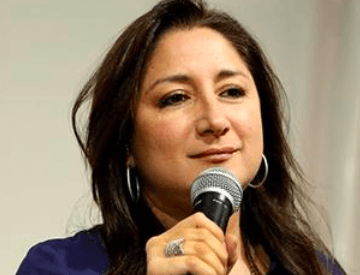
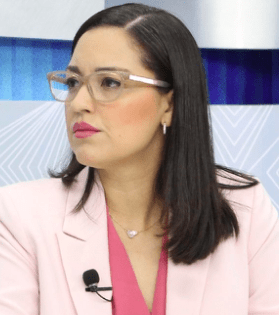

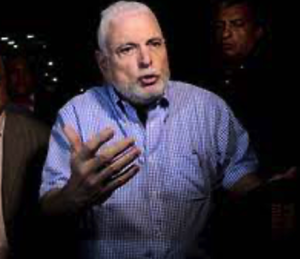 Martinelli (pictured) was charged with money laundering in a case known as ‘New Business’ which involved the purchase of public funds. New Business was the name of a front company which collected approximately $43 million from firms that received lucrative government contracts. Those funds were then used to buy a media conglomerate with control of several national papers.
Martinelli (pictured) was charged with money laundering in a case known as ‘New Business’ which involved the purchase of public funds. New Business was the name of a front company which collected approximately $43 million from firms that received lucrative government contracts. Those funds were then used to buy a media conglomerate with control of several national papers.